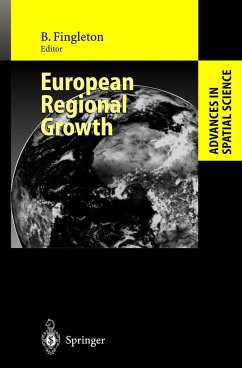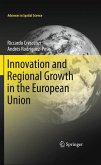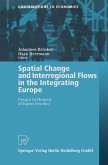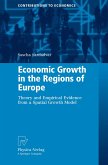This book is the outcome of three major influences. First, the ongoing integration of the European regional economies and the need to understand what this means for European economic and social cohesion. Second, the development of geo-economic theories ranging from neoclassical growth theory and endogenous growth theory to new theories of economic geography. Third, the development of techniques of spatial data analysis, simulation, data visualization and spatial econometrics. The outcome is a collection of chapters which apply these methods, motivated by a variety of theoretical stances, in order to advance our understanding of European regional growth. The book provides powerful and detailed analyses of the causes of income, productivity and employment variations across Europe's regions, and insights into their future prospects.
Looking into the future and trying to visualize long-run regional disparities is difficult. There is no agreed single theory to guide our model building, although some insight can be gained from analysisofthe past and by looking at the differ ent theoretical positions to see if there is any agreement at least in terms of out come ifnot in terms of mechanism. This is what is attempted in this book, which brings together specialists with a common interest in European regional growth and in applying quantitative analytical and simulation techniques in order to pro vide different perspectives on the topic. Manyofthe Chapters in the book employ the methods of spatial econometrics. Spatial econometrics is a suite of statistical and econometric tools dedicated to the analysisofspatial data, in other words data that is set within the context of socio-econornic theories and which can be repre sented most informatively in mapped form. These methods have emerged over the last half-century from aseries of influential papers and books in the fields of re gional science, spatial statistics and quantitative geography, and are ripe for seri ous application in the context of the EU's development. In particular they provide the means by which to analyze spatially indexed data where the time dimension is essentially suppressed because, for instance the variables of interest are not avail able or are of questionable accuracy, which is often the case when one is inter ested in regional, rather than national, variations across a numberofcountries.
Hinweis: Dieser Artikel kann nur an eine deutsche Lieferadresse ausgeliefert werden.
Looking into the future and trying to visualize long-run regional disparities is difficult. There is no agreed single theory to guide our model building, although some insight can be gained from analysisofthe past and by looking at the differ ent theoretical positions to see if there is any agreement at least in terms of out come ifnot in terms of mechanism. This is what is attempted in this book, which brings together specialists with a common interest in European regional growth and in applying quantitative analytical and simulation techniques in order to pro vide different perspectives on the topic. Manyofthe Chapters in the book employ the methods of spatial econometrics. Spatial econometrics is a suite of statistical and econometric tools dedicated to the analysisofspatial data, in other words data that is set within the context of socio-econornic theories and which can be repre sented most informatively in mapped form. These methods have emerged over the last half-century from aseries of influential papers and books in the fields of re gional science, spatial statistics and quantitative geography, and are ripe for seri ous application in the context of the EU's development. In particular they provide the means by which to analyze spatially indexed data where the time dimension is essentially suppressed because, for instance the variables of interest are not avail able or are of questionable accuracy, which is often the case when one is inter ested in regional, rather than national, variations across a numberofcountries.
Hinweis: Dieser Artikel kann nur an eine deutsche Lieferadresse ausgeliefert werden.









